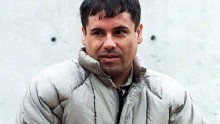After 'El Chapo' escape, Mexico offers reward for fugitive drug lord's capture
Mexico's most notorious drug lord now has one more nefarious title: serial prison escapee.
Authorities are scrambling to find Joaquin "El Chapo" Guzman after his stunning escape from a maximum-security prison west of Mexico City.
The leader of the Sinaloa cartel stepped into a shower Saturday night, crawled through a hole and vanished through a mile-long tunnel apparently built just for him.
Mexico's government is offering a reward of up to 60 million pesos ($3.8 million) for information leading to his capture, the country's attorney general told reporters Monday, releasing what she said was a recent photograph of the cartel kingpin.
The image shows the Sinaloa cartel chief with a shaved head and face -- and without the trademark mustache he sported when authorities nabbed him last year.
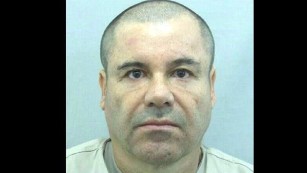
Mexican authorities released what they said was a recent photograph of escaped drug lord Joaquin "El Chapo" Guzman as they announced a reward for information leading to his capture.
Mexico's interior minister said Monday that he'd fired the prison's director, and he vowed the government won't stop until Guzman is behind bars again. But right now, the cartel kingpin's whereabouts are anyone's guess.
How he did it
Guzman, whose nickname means "Shorty," has pulled off an elaborate escape from a maximum-security prison before. In 2001, he managed to break free while reportedly hiding in a laundry cart. It took authorities 13 years to catch him -- sleeping at a Mexican beach resort.
This time, during his escape from Altiplano federal prison in Almoloya de Juárez, officials believe he took a much more sophisticated route: a tunnel complete with lighting, ventilation and even a modified motorcycle on tracks "that was likely used to remove dirt during the excavation and transport the tools for the dig," Mexican National Security Commissioner Monte Alejandro Rubido said.
The tunnel began with a 50-by-50-centimeter (20-by-20-inch) opening inside the shower of Guzman's cell, Rubido said. The tunnel stretched for about a mile and ended inside a half-built house
To pull off the escape, it's likely the Sinaloa cartel had spent years infiltrating the country's prison system, a Mexican official told CNN on Monday. Whoever helped in the plot likely had the architectural plans for the prison that pointed them toward the shower area, the official said.

Official: 'El Chapo' escape tunnel had motorcycle track
As authorities detailed the evidence they'd found pointing to Guzman's escape through the underground passageway, one drug war expert questioned Monday whether the notorious kingpin even used the tunnel at all.
"If he went out that tunnel, it was with an armed escort, most likely a mix of prison guards and his own people, if the past is prologue," said Don Winslow, who's tracked Guzman's career for 15 years and wrote about a fictional version of the famed kingpin's 2001 escape in his recent novel "The Cartel."
"My bet is that he went out the front gate, and the tunnel was a tissue-thin face-saving device for Mexican officials, the motorcycle a dramatic improvement over the laundry cart."
How did Guzman slip by the prison's extensive network of security systems?
It's likely prison workers played a role, Mexican Interior Minister Miguel Ángel Osorio Chong said Monday as he announced that he'd fired the prison's director and other prison officials as authorities continue their investigation.
Guzman, he said, was inside a cell with 24-hour hour closed circuit video surveillance and a bracelet that monitored his every move. The video system, he said, had two blind spots that Guzman exploited. And he left the bracelet behind before he crawled into the tunnel and made his getaway.
Tunnel vision: A look inside El Chapo's underground hideaways
Search intensifies
Mexico's attorney general said Monday that 34 people had been questioned in connection with the escape. And the country's interior minister asked for help from the public in tracking Guzman down.
Where could he be?
It's possible Guzman is hiding out in the sprawling metropolis of Mexico City while the search is hot, a Mexican official told CNN.
But in the end, the official said it's likely Guzman will head back to his home turf in the Sinaloa region on the Pacific Coast, where there's a vast network of local residents who will help him stay out of harm's way. Just like the late al Qaeda leader Osama bin Laden famously hid in a remote, mountainous area of Afghanistan, Guzman is believed to have found refuge at times during his past stints on the lam in rugged mountain areas of Mexico.
"It's like Tora-Bora there," the official said.
No matter where he's hiding, time is of the essence, according to Mike Braun, a former chief of operations for the Drug Enforcement Administration who spent years tracking and gathering evidence on Guzman.
"The first 72 hours (after the escape) are extraordinarily important here," he told CNN's "Erin Burnett: Outfront." "And if they don't get their hands on him then, I don't know, we may never see this guy again."
U.S. official: We told you so
Guzman has been a nightmare for both sides of the border. He reigns over a multibillion dollar global drug empire that supplied much of the marijuana, cocaine and heroin sold on the streets of the United States.
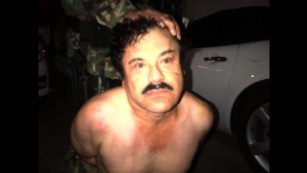
Who is Joaquin 'El Chapo' Guzman?
"In addition to his crimes in Mexico, he faces multiple drug trafficking and organized crime charges in the United States," Lynch said. "The U.S. government stands ready to work with our Mexican partners to provide any assistance that may help support his swift recapture."
U.S. officials are livid about Guzman's escape. When he was arrested in Mexico last year, the United States asked to have him extradited, in part because of concerns of a prison escape.
"This is exactly why we argued for his extradition," a U.S. law enforcement official said, adding that the escape shows "the strength of the cartel and his ability to pay people off."
"If this guy can get out of prison, it shows how deep the corruption is there," the official said.
The Mexican official who spoke with CNN on Monday bristled at that claim, noting that two murderers recently escaped from a New York prison.
Why corruption is so rampant
CNN legal analyst Danny Cevallos, who has lived in Sinaloa, said bribes can often sway Mexican authorities.
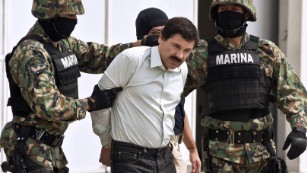
'El Chapo' breaks out of prison through tunnel
"Things are just different in Mexico from a legal perspective and a law enforcement perspective than they are stateside," Cevallos said. "It's not uncommon, even if you get stopped in the street, to hand over a roll of pesos to be able to go on your way."
Concerns that Mexican police officers and other law enforcement officials could be on the take has been a longstanding issue in the drug war.
"We worried about the level of corruption," former U.S. Attorney General Alberto Gonzales told CNN Monday as he described U.S. efforts to cooperate with Mexico during his tenure.
And bribing authorities is even easier when you're a wealthy kingpin like Guzman. His carefully planned 2001 prison escape allegedly cost him $2.5 million in cooperation, according to Malcolm Beith's book "Last Narco."
Yet sometimes, authorities succumb to bribes not out of greed, but out of fear -- especially when they're handling someone as powerful as Guzman.
"It's estimated that he may have murdered or ordered the murders of more than 10,000 people," said Tom Fuentes, a CNN law enforcement analyst and a former assistant director of the FBI.
"So this is not somebody who is playing around with prison officials," he said. "He pretty much controls what he wants to do, and they go along with it. They look the other way to keep their families alive."
'A complete savage'
Guzman heads the Sinaloa cartel, which the U.S. Justice Department says is "one of the world's most prolific, violent and powerful drug cartels." It says Guzman was considered the world's most powerful drug lord until his arrest in Mexico in February 2014.
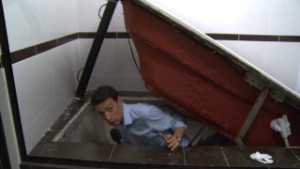
Inside 'El Chapo's' safe house
"He is a complete savage," Fuentes said. "What they do, and how they do business, is based on complete terror. ... They kill journalists, politicians, police officers, corrections officers. And then not just that person, but every member of their family."
The Sinaloa cartel moves drugs by land, air and sea, including cargo aircraft, private aircraft, buses, fishing vessels and even submarines, the Justice Department has said.
The cartel has become so powerful that Forbes magazine listed Guzman among the ranks of Bill Gates and Warren Buffett in its 2009 list of "self-made" billionaires. Guzman's estimated fortune at the time was $1 billion.
News Courtesy: www.cnn.com

